In a sense, this home was decades in the making. In the early ’90s, architect Carol Kurth designed a home for an art-minded couple. "At that time, they were just embarking on collecting," recalls Kurth, whose ensuing design, called Art House, included space for the couple’s growing ensemble. Then, some 20 years later, the clients reached out to Kurth again. Now facing retirement, they wanted to build a one-story home to accommodate all of their passions, including art, books, and nature.
In 2014, Carol Kurth Architecture + Interiors completed this solar passive house of glass, cedar, and stone in Pound Ridge, New York, for a retired couple that wanted to enjoy their favorite pastimes: collecting art and enjoying nature.
For three years, Kurth and the clients searched for the right property for Art House 2.0, finally finding the ideal sloped and wooded lot in Pound Ridge, New York. The program was straightforward: "The first house we did had a lot of curves," says Kurth. "In this house, one of the very few brief items was ‘No curves.’ They wanted straight walls because they had a lot more art, and they wanted something that would feel more part of the land."
The exterior landscaping stays low so as to meet the bottom of the window and interior floor level, which creates a more fluid indoor/outdoor effect.
Kurth sited the rectilinear home on the crest of the hill, so a lower level could be tucked underneath. The upper floor is allotted to the main living spaces, including a study and two bedrooms, while the downstairs hosts a gym, workshop, and guest quarters. Key to the main floor layout was carving out space in passageways for bookcases, art niches, or both. A neutral palette of crisp white walls and porcelain tile floors underscores the gallery-like feel.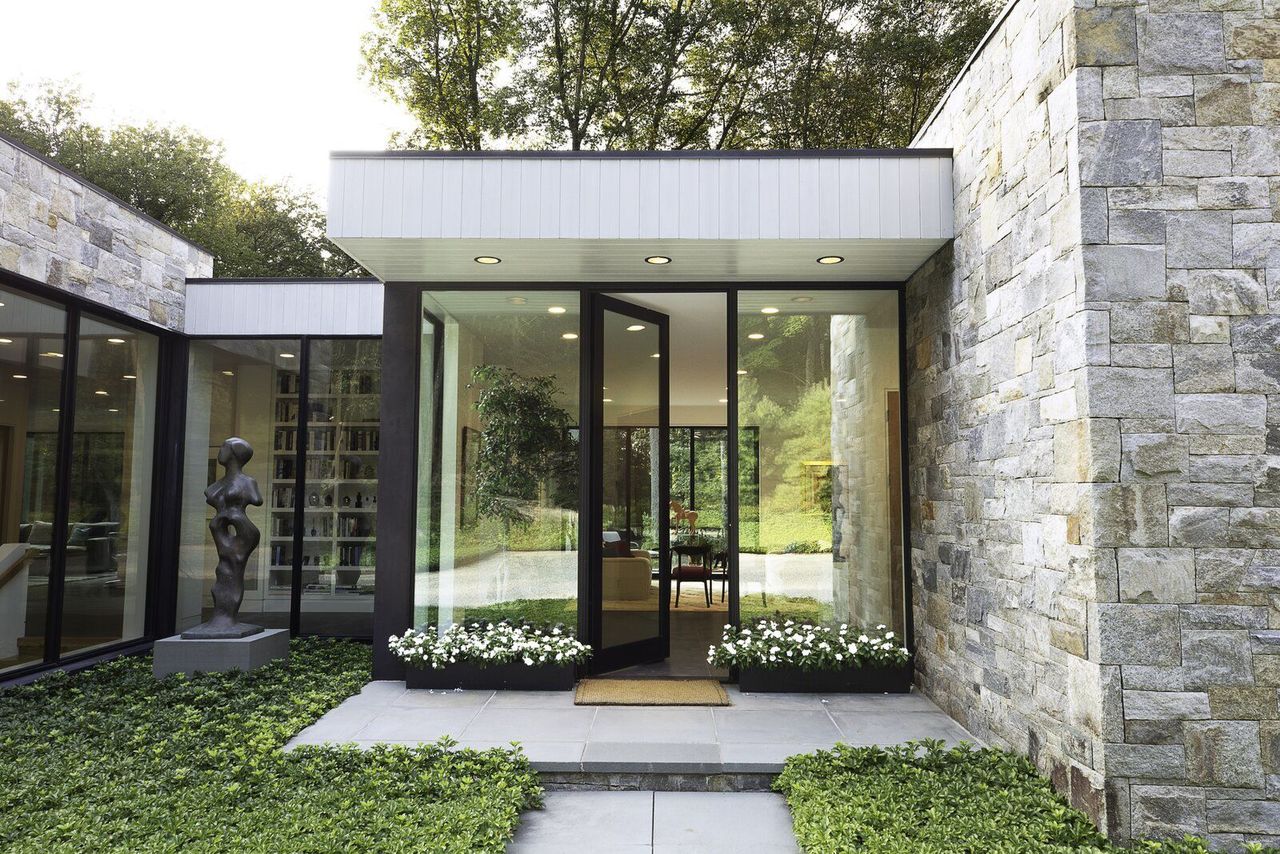
At the entry, Kurth created a glassed alcove for an exterior sculpture using Series 600 Window Walls from Western Window Systems.
"The windows play a big role in this house because we're working with solid and void, and we wanted the thinnest sight lines that we could achieve to get the maximum glass," says Kurth. To that end, every solid expanse of wall was precisely measured to fit a piece of art, and the architect tapped Western Window Systems for the glazing. "It really is a system," says Kurth. "Because it is a system, we can work with the components to create what we needed. That really does make the difference."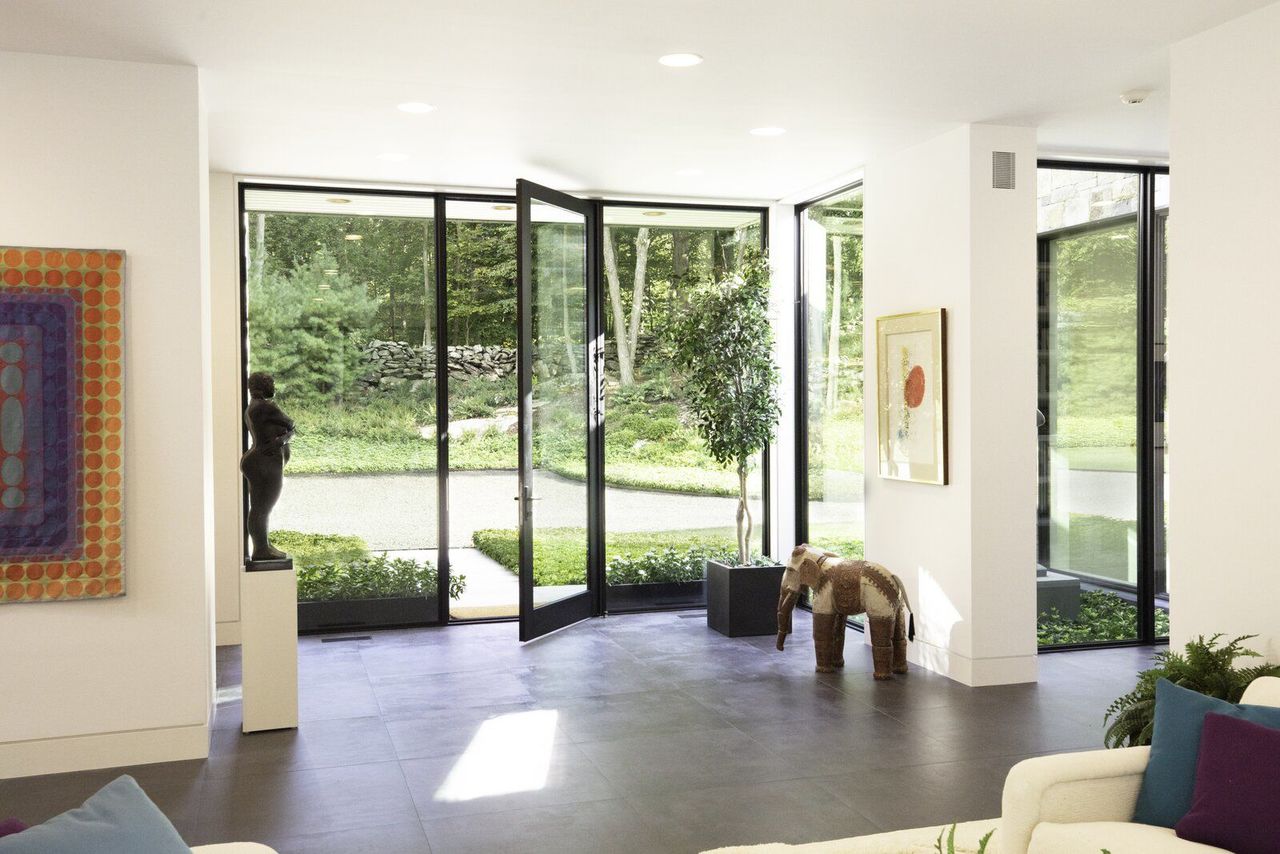
A Series 900 Hinged Door works seamlessly with the windows that flank it at the entry.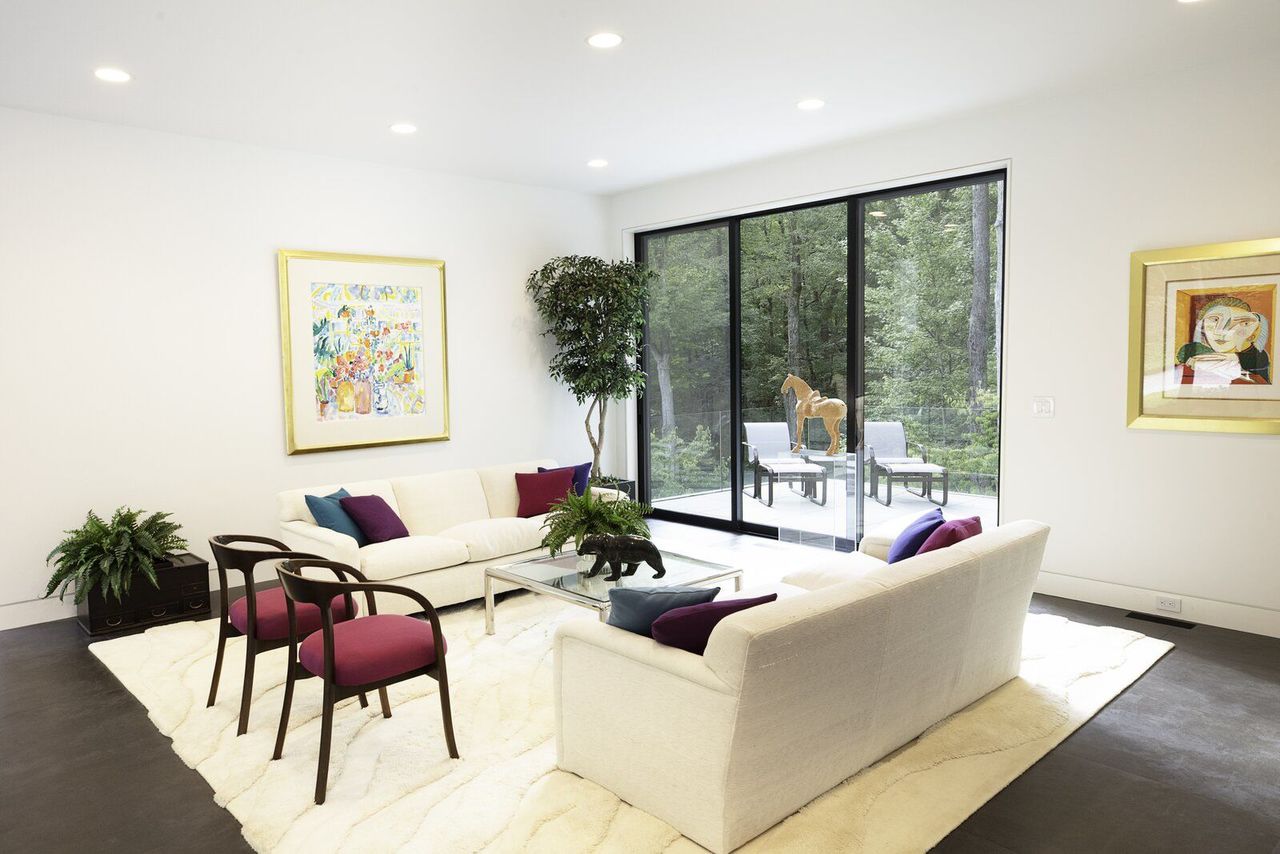
In the living room, a Series 600 Multi-Slide Door from Western Window Systems opens to an outdoor patio to maintain the flow between inside and out.
The window detailing was essential to the success of the design, including the dual-paned, low-E glass that keeps art from being damaged, the clean-lined and minimal hardware, and energy efficient thermally broken aluminum construction. A "beautiful sill detail" enabled Kurth to bring the glass down to the finished floor, and further connect the home to the view. "A lot of manufacturers will have a big, bulky bottom-not only the sill, but a frame," notes Kurth, who needed a more seamless effect.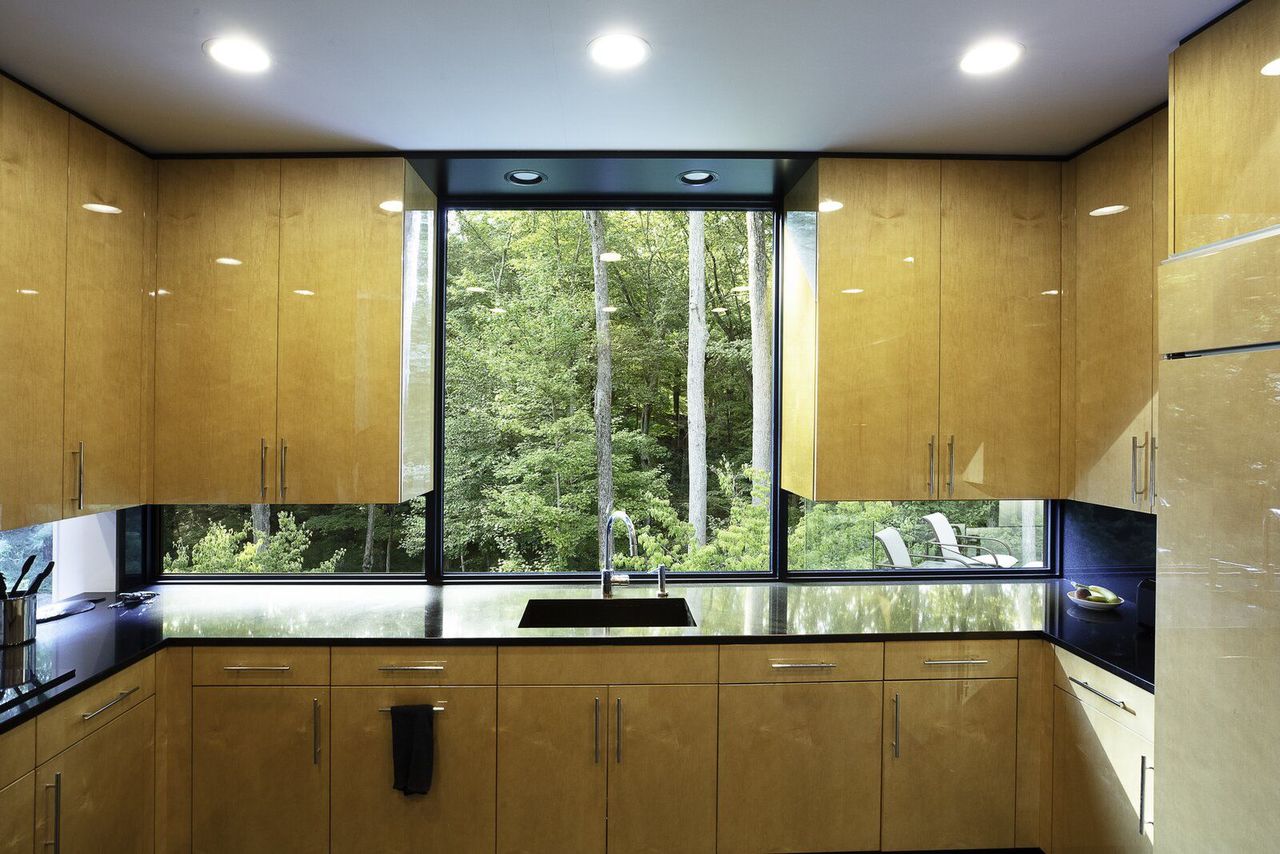
In the kitchen, windows are a backsplash that capture the view.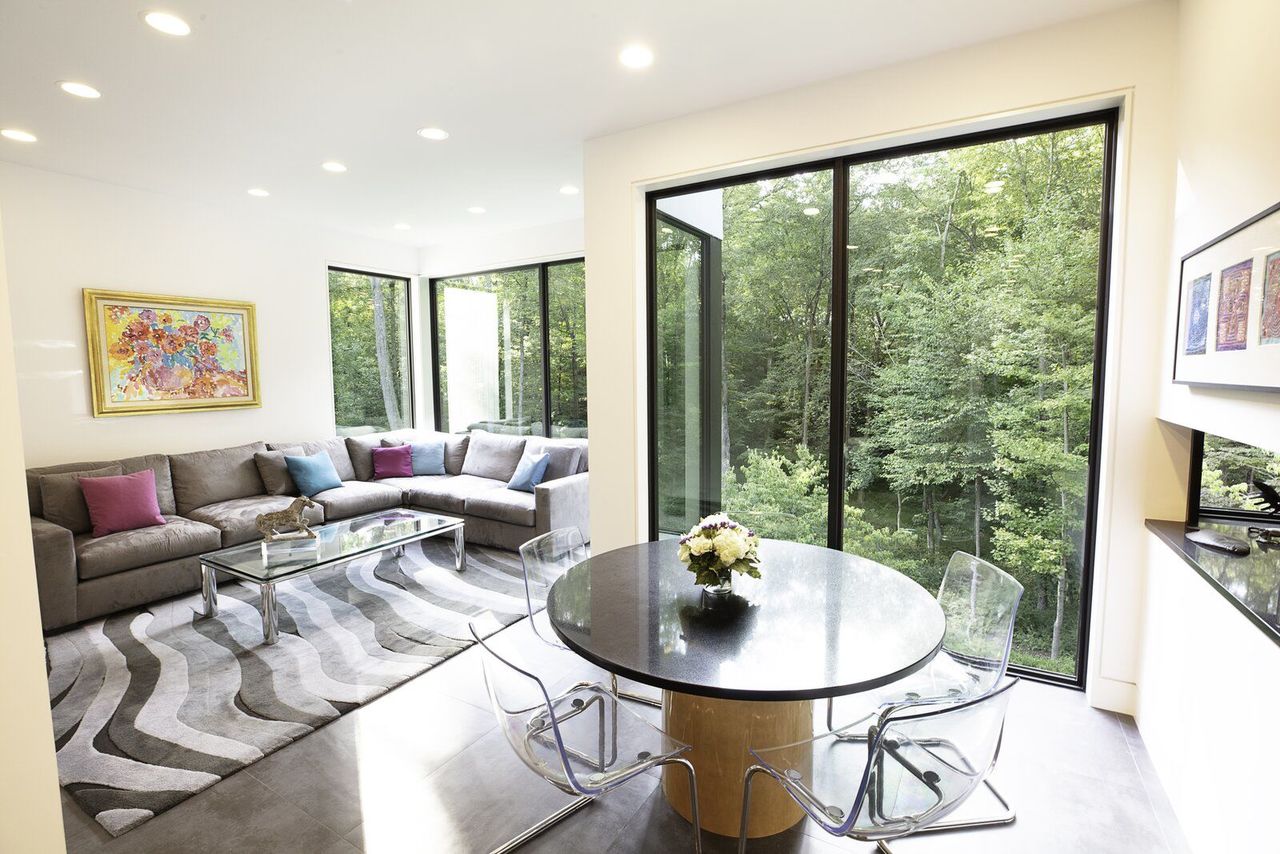
A crisp recessed line demarks the trim around the windows, doors, and baseboards all the way around the house, and contributes to its gallery-like feel.
On the exterior, vertical boards of pale cedar "blend in with the trunks of the trees," and joins walls made of fieldstone, a material common to the area. The landscaping uses sweeps of pachysandra ground cover to enfold the building and emulate an undulating river form, further merging the house with its site.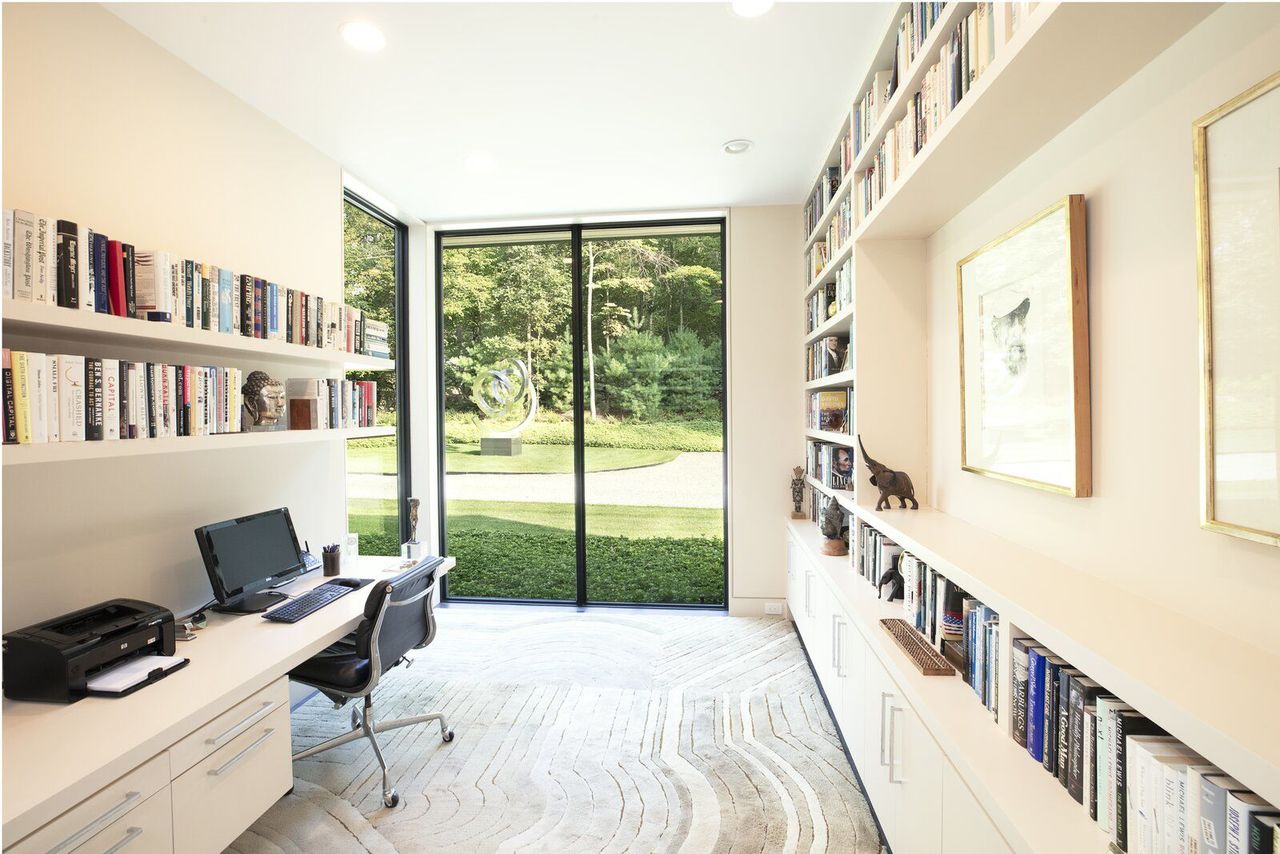
Alcoves for books and art are woven throughout the house.
During the planning process, the clients began adding outdoor sculpture to their collection after Kurth suggested an "art quest." "I said to them, ‘We're running out of wall space…I really think you should be collecting sculpture at this point,’" says Kurth. "And they love a challenge."
As the couple searched, Kurth planned for the sculpture placements, including capping a long axis with a single fixed window to frame a striking piece, and at the entry, forming an exterior niche that’s wrapped in window walls, so the art can be appreciated from several angles. 
A fixed window at the end of a hallway frames an outdoor sculpture. The acoustics throughout the home are comfortable, says Kurth, thanks to a high-level of insulation and tight envelope. "There's no echo-y sound," says Kurth.
"It's always a balance between the art, the wall, and the glass. Nature here is the art. It’s like a tapestry that changes," says Kurth. "Every season has something spectacular to offer. You really feel very connected to it because the glass sizes are so large."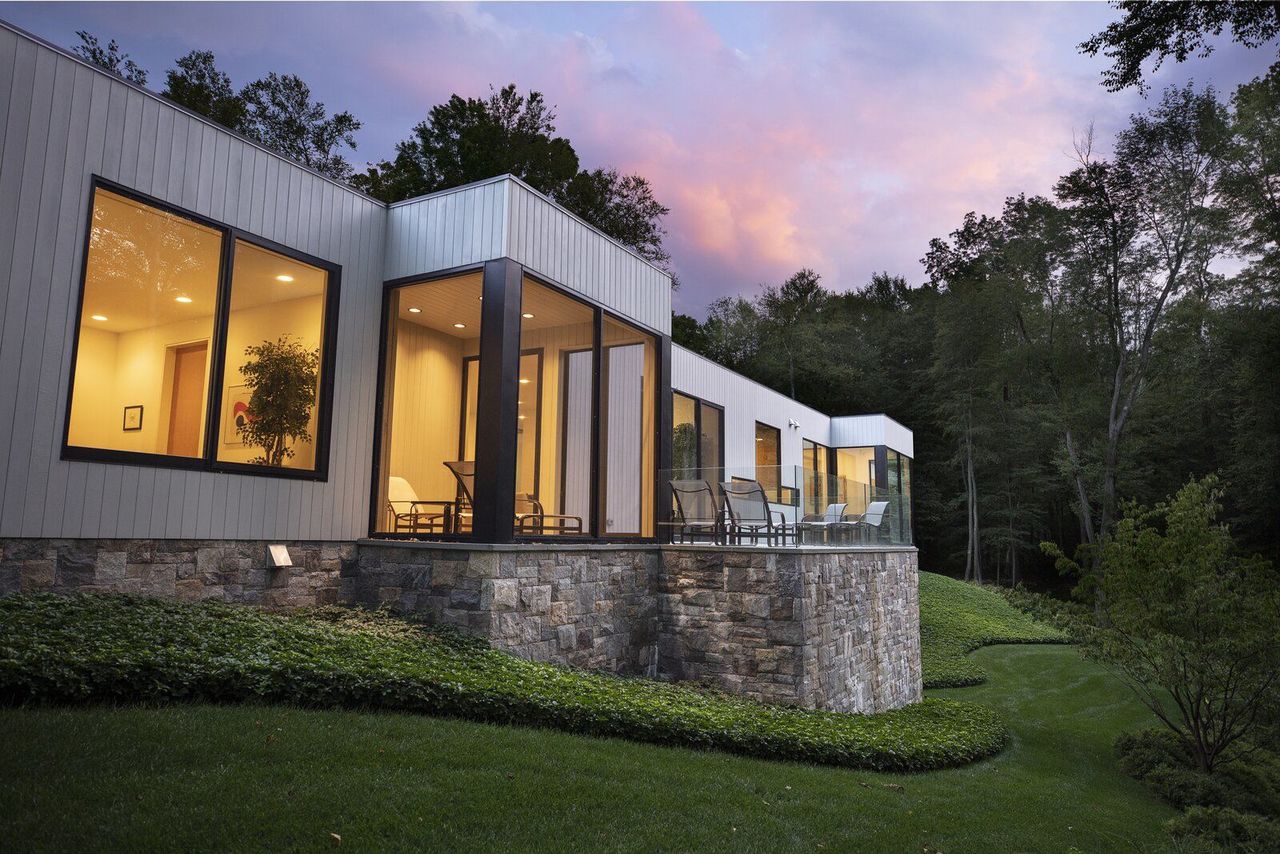
Undulating curves of ground cover sweep around the house and the stone walls.

Tropical Boho Homes With Beautiful Vignettes & Vistas
Two tropical boho home designs, featuring swimming pools, cozy lighting schemes, interior archways, natural accents, and beautiful decor vignettes.


![A Tranquil Jungle House That Incorporates Japanese Ethos [Video]](https://asean2.ainewslabs.com/images/22/08/b-2ennetkmmnn_t.jpg)









